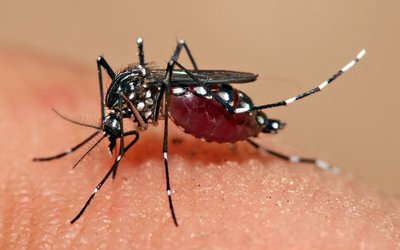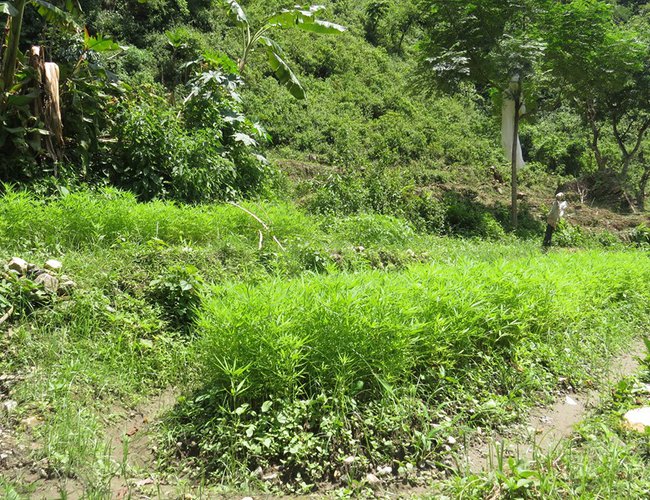
Prehistoric use of cannabis is narrated in various ancients texts related to Nepal. This Hindu Kingdom (constitutionally a secular federal republic) has been an abode of Yogis and various shakti piths have emerged here. The opinion of where the discussion should be is the intention of these two politically differing yet working for Nepal’s way to meet Sustainable Development Goals (SDGs) have to say.
As a Democrat, the first author feels that these lands blessed by Nature have always been the abode of medicinal plants that even confused divine power yielding Hanuman from the Holy Ramayana character. He had to take a mountain with him back to Lanka as every plant on it had miracle life-saving properties. The extended Kailash ecosystem has been selected by the God of Gods~Mahadev to be His retreat and it is here that the origin of cannabis is reported (The Hindu Kush
knot). It is here a lot of Evolutionary activities happened and right at Kailash, Mahadev is depicted chilling with a pipe, a conch shell, trident, consort Nature and Nandi the Bull among others. One among the trio supreme force in nature worshiping Sanatana dharma. During that time it was common to meditate in the presence of cannabis smoke to evoke transience spiritual euphoria. And recent archeological evidence supports the fact. Ancient texts depict Him as associated with the use of recreational cannabis and assigned the role of a destroyer of the celestial eternity.
The first author was a witness and in some ways involved in preliminary regulatory preparation to the event unfolding October 17, 2018, when Canada becomes the second country after Uruguay to legalize the consumption of marijuana. This move is being critically watched by all around the world and for sure it is much easier to study how cannabis affects the body and the brain, the socio-economic dimension to society that is quickly transforming to natural ways now. Malloy MJ makes note of the cautionary medical approval that continues to pour in- “cannabis has risks and maybe benefits”. It has now been easier to access specimen for research which under prohibition hampered the attempt to figure out what those risks and benefits in an open way. The hope is that the legalization of cannabis will take the shackles off scientific inquiry and will allow researchers to ask and answer the sort of questions
we should have been asking twenty, thirty, forty years ago. In many nations, it is next to impossible to study the physiological effects of cannabis in humans. Like in Canada researchers have to apply for an exemption from the Controlled Drugs and Substances Act. Famous sociologist Hathaway A, of the University of Guelph laments that funding hasn’t been easy to come by either, making Cannabis research the “poor second cousin of alcohol studies”. But with legalization on the horizon, studies into its effects on health are even more critical, and funders apparently agree, infusing more money into cannabis research.
The trouble is that while consumers will be able to easily buy pot, scientists still face restrictions on how they can study it. In Nepal, the culture of research is in poor state and with a controlled substance, it becomes even trickier. However, given the natural distribution of various species of cannabis, the differences in the bioactive compounds due to extreme ecological alterations in short physical distance makes Nepal a unique natural laboratory.
A legacy of restricted research on marijuana-Canadian experience Despite widespread use and anecdotal evidence to support marijuana’s benefits, researchers don’t have a concrete grasp on how exactly cannabis interacts with the chemistry and physiology of the brain. Basic research on the endocannabinoid system got a boost with its understanding in the 1980s. Researchers are going deep in the whole system research and beyond in the sphere of social and biological implications. The illicit nature of cannabis, however, has limited our knowledge of the effects of cannabis as a whole. In the States too it is difficult for scientists to study the plant and its various phytochemicals. In Europe, Dutch, French, English, and Swiss researchers are doing their part mostly concentrated in genetic improvement of the plant to manipulate its bioactive compounds.
The decision of the Canadian government to decriminalize cannabis has been possible from the strong lobby by scientists who collectively said that- Substantial knowledge gaps remain related to the potential consequences of legalized cannabis use. They argued that the government needed to develop avenues for researchers to “produce, possess, and use cannabis and cannabinoids for research purposes”. They sought to create and support dedicated and distinct funds for medical and non-medical cannabis research.
The response from the Government of Canada was encouraging as it modified its regulation of medical marijuana, making it easier to access. However, the same could have been done for research, but it didn’t happen. Some high profile scientists by their sheer force of personality have been able to do preliminary studies on cannabis use, particularly for treating pain and for managing HIV infections. These researchers have added to the knowledge of the endocannabinoid system that plays an important role in appetite, mood, and memory.
Huge gaps still remain in terms of our understanding of cannabis effects on brain development, mental health, or other health outcomes. The proven benefits of cannabis in bone repair and pain management is another area that needs larger clinical studies. The application in pet care and overall veterinary usage is another raw area to venture into. It is still early days; there is so much to know about cannabis and its components’ complicated relationship with our bodies and minds than what we do know.
With other recreational substances, alcohol, and tobacco included, we have reams of top-level public health research — studies that dissected the habits of billions of users, giving scientists an accurate, and big-picture focus on those drugs’ impacts on our health.
In Canada in spite of legalization, research regulations haven’t changed. Scientists still have to apply for an exemption to conduct cannabis research. Health Canada, the national public health agency is updating its regulations and loosening requirements to grow, process, and possess cannabis, although the rules apply mainly to agricultural science, not public health and basic research.
The economics of the black market of cannabis and the urgent need to tackle the synthetic opioid crisis was the tipping factors in deciding its legalization. Analysts estimate that a legal cannabis market could become a $5-billion to $6-billion industry in Canada, with some of that money streamed toward research. Millions of dollars continue to be pumped in to research now as the focus centers on understanding how recreational legalization will influence public health, including exposure to second-hand marijuana smoke and the effects of use during pregnancy. New pockets of money are opening, says Hathaway, who has been surveying marijuana users of Canada for over two decades, trying to understand the different populations of people who use the drug. The drawback of big-scale funding is that it is being awarded to multidisciplinary teams, which could squeeze out researchers working in the field on a smaller scale, or those seeking answers about the cultural ramifications of cannabis use or other topics not directly related to public health.
Another worry is that corporate research will also enter the arena, which could lead to conflicts of interest for scientists taking company money. Like in pharmaceutical researches corporate tend to encroach on academic integrity and freedom hence government agencies should be on the strict watch. Despite the concerns about the research to come, legalization has pushed more and more investigators to join the field. Canada is aiming to be a world leader in cannabis research and opening up to colleagues outside Canada, in the U.S., England, in France and Uruguay.
Current situation of Nepal
Nepal once famous as the hippie destination still caters to cannabis lovers around the world. The voice to decriminalize cannabis use is growing louder as a democratic generation wants their government to stop interfering in an individual’s choice of what goes into their body as long as it does not harm others. When sex tourism is mooted as one avenue for revenue generation, cannabis has huge potentiality to bring in much needed hard cash. It is not hidden to an administration that purple haze continues to pull nature-loving tourists and like its rivers a huge cache continues to flow downstream. The federal structure of the nation has made it an expensive governance experience but it has also made local government strong and functional.
Thus regulating licensed growing facilities or household plant quota in specific parts of the country will help tackle the growing gap of rich and poor. Likewise, as international researchers seek to collaborate in the name of North-South or East-West exchanges, Nepal has a sound footing and strong advantage. Relatively lower overhead cost, nonexistent or softer ethics/regulations and inviting visa options make Nepal an ideal hub for such research. Availability of fresh graduates to serve as young researchers from diverse fields, some advance facilities, strong medical research history, established and mushrooming universities and most important the initiation of brain gain, makes Nepal at an advantageous position to contribute to global cannabis research. The government land at Nagarkot set aside to produce the “Trisul” brand meant to be distributed among Sadhus visiting Pasupatinath for Shivaratri can continue doing so for research. The illegal plantation is pushed by demands in India and financed mostly by traders from India. The remote hilly regions of districts bordering India are targeted by these traders, who invest cash and technology to lure the indigenous inhabitants to work as planters, guards and porters of the harvested crop. Mostly major rivers and roads serve to bring the packaged harvest to the border areas, where cross border smugglers carry it forward to major Indian cities. Ban on booze is also feeling the trade of this recreational commodity and a record amount of seizures is an indication of the rapid growth in this illegal business.
Conclusion
Thus, in conclusion, it can be said that Nepal has always made blunders by blindly following the West, the realized ones there are pursuing the ways of life back to where Nepal was several decades ago. Implications of cannabis control came with huge costs to the nation as it became one of the major causes of the armed rebellion and unaccounted economic loss. We should not wait for someone to come from abroad and initiate the legalization as we got dictated to criminalize it in the
past. It is high time we understand that the extremely developed and self-realized section of Western society is opting for the ways of lifestyle our grandparents used to have in rural Nepal though with better infrastructure and medical facilities. Nepal needs to assess its national and international legal bindings and work towards loosening cannabis research hurdles.
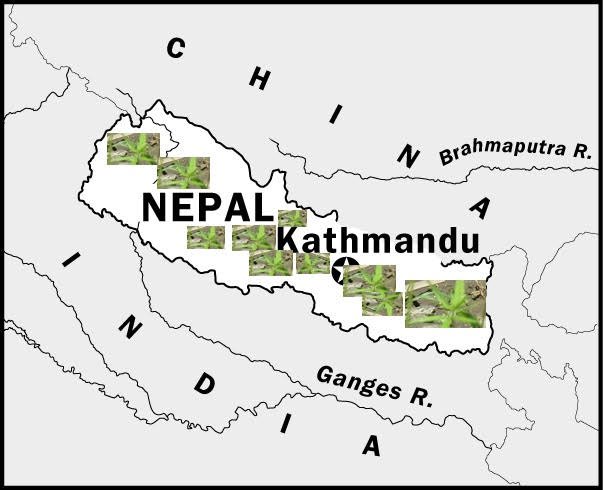
Cannabis sativa, Cannabis indica is grown throughout Nepal, some specific mid-hills are famous for good quality products. Intercropping for concealment is practiced, while the North and South trade though illegal is on a rise.
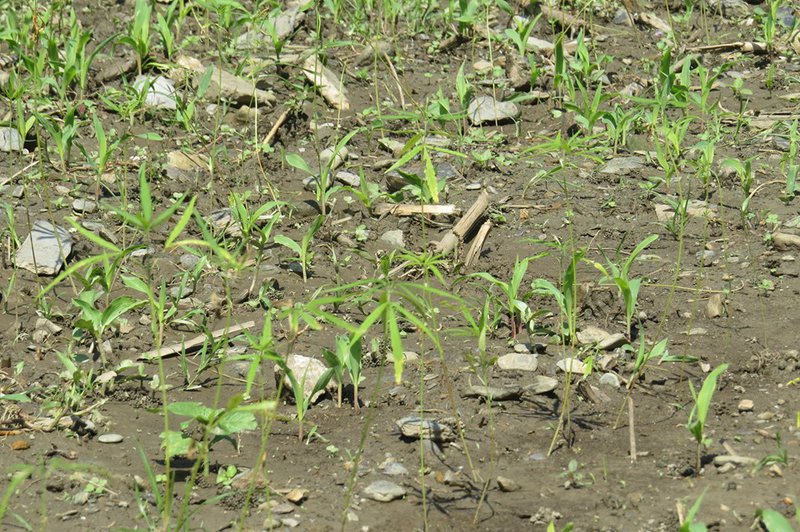
2. Cannabis sps planted in the remote settlement of Nepalese mid-hill, intercropping with maize is evident. Indian traders are said to invest in inputs and collect the harvest which gets smuggled to India. Ban of alcohol and growing middle class in neighboring Indian states have also raised demands many folds.
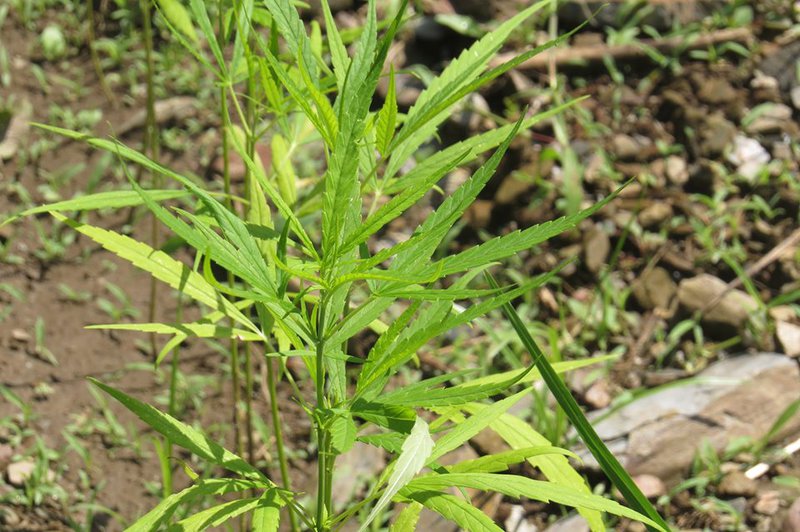
Figure 4. Terrace with the promising harvest, the only worry is the security forces that come from the plains (major outposts) and trek for hours and days to destroy the crops as it is considered illegal. The resources used in the containment of the growing business is stretching the functioning of the security forces and diverting from more serious crimes like hunting and trade of rare wildlife, weapon and human smuggling, terrorism, and security of politicians now spread throughout three tiers of the governance-local, province and federal
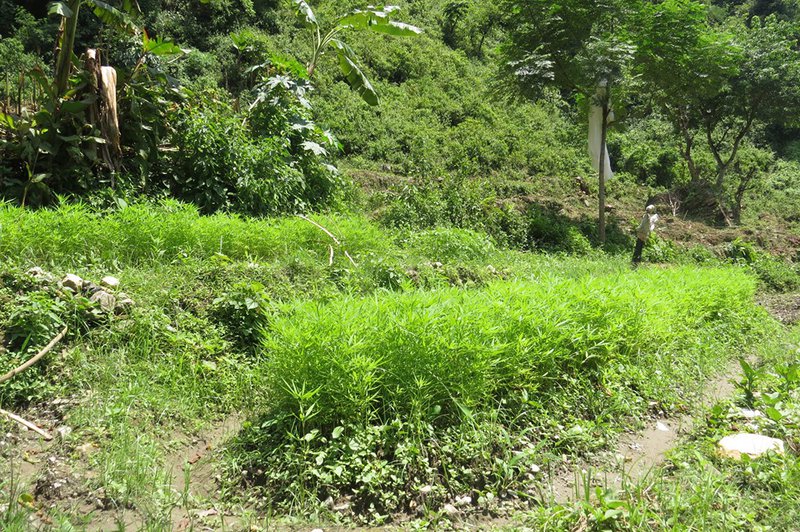
Figure 4. Terrace with the promising harvest, the only worry is the security forces that come from the plains (major outposts) and trek for hours and days to destroy the crops as it is considered illegal. The resources used in the containment of the growing business is stretching the functioning of the security forces and diverting from more serious crimes like hunting and trade of rare wildlife, weapon and human smuggling, terrorism, and security of politicians now spread throughout three tiers of the governance-local, province and federal
Mishra Associate Professors, IAAS, TU, Nepal. Kaphle, is the Director, Veterinary Teaching Hospital, IAAS, Tribhuvan University, krishnakaphle@iaas.edu.np,

